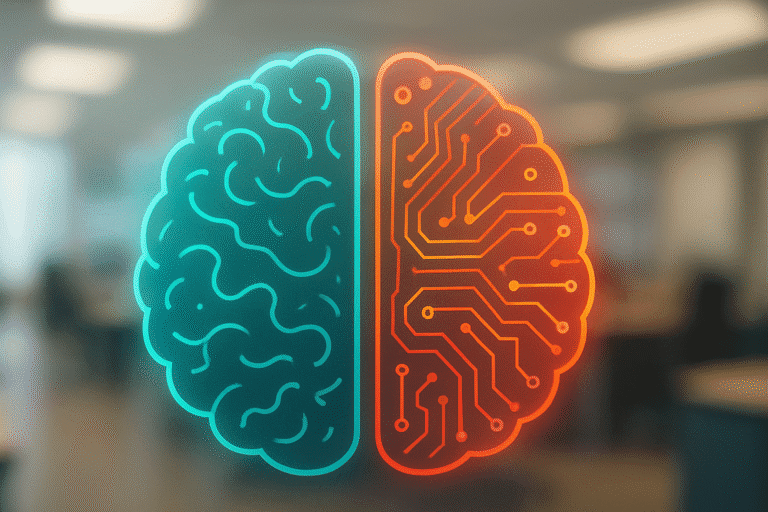
AI is here—and it’s not just a buzzword anymore. From content creation to customer service to data analysis, artificial intelligence has quietly made its way into the everyday operations of modern businesses.
But while AI can be incredibly helpful, it’s not without its downsides. Some uses are innovative. Others are risky. And a few are downright irresponsible.
Let’s break down the helpful and harmful aspects of AI, and what smart business owners and IT leaders need to watch out for.
_____________________________________
The Helpful Side of AI: Smarter, Faster, Easier
AI shines when it comes to automation, analysis, and scalability. If you’ve ever used tools like ChatGPT, Grammarly, or Microsoft Copilot, you’ve already seen how helpful AI can be.
1. Automation That Actually Works
Repetitive tasks—like scheduling, email triage, or even drafting routine documents—can now be handled by AI. This frees up time for real work and reduces the friction in your day-to-day.
Think of it as having a super-efficient assistant who never gets tired (or takes coffee breaks).
2. Powerful Data Insights
AI tools can process massive amounts of information to help you find patterns, forecast trends, or spot problems before they escalate. Whether it’s sales data or system logs, machine learning can deliver insights faster than any spreadsheet ever could.
3. Better Customer Experiences
Chatbots, smart ticket routing, and predictive text tools all use AI to provide faster, more personalized support. When done well, this means better service without burning out your staff.
4. Creative Support at Scale
Need help brainstorming blog titles, editing product photos, or writing an email campaign? AI tools can generate first drafts and design mockups in seconds—great for marketers, small teams, and solopreneurs alike.
____________________________________
The Harmful Side of AI: What to Watch Out For
AI may be impressive, but it’s far from perfect. And without guardrails, it can do more harm than good.
1. Misinformation and “Hallucinations”
AI doesn’t “know” the truth—it predicts what sounds true based on training data. That means tools like ChatGPT can sometimes confidently generate wrong answers or outdated information. In regulated industries or public communication, that’s a serious problem.
Bottom line: Always fact-check AI-generated content before publishing or acting on it.
2. Built-in Bias
AI systems learn from human data, and human data includes bias. This can show up in hiring algorithms, loan assessments, and facial recognition tools—often reinforcing systemic discrimination unintentionally.
3. Data Privacy Concerns
AI systems require large datasets to learn and function. That creates a risk of accidental data exposure or storing sensitive information in tools that don’t meet your company’s compliance needs (HIPAA, GDPR, etc.).
Be extra cautious when feeding customer data, employee information, or intellectual property into free or public AI tools.
4. Workforce Impact
While AI helps with efficiency, it also raises tough questions about job displacement. Some tasks will change, others may disappear—and businesses need to think ahead about reskilling and role evolution, not just cutting headcount.
____________________________________________
How TechWyze Helps Clients Use AI Responsibly
We’ve helped businesses integrate AI into their operations without losing control of their data or values. Here’s how we approach it:
Use case assessment: We help you identify where AI will actually deliver value (and where it won’t).
Tool vetting: Not all AI platforms are created equal. We only recommend tools with strong data governance, transparency, and enterprise support.
Policy development: We work with leadership to create clear internal policies around AI use, content review, and data handling.
Staff training: We offer security awareness and responsible AI workshops so your team can use AI confidently and safely.
____________________________
Smart AI, Smarter Users
AI works best when it’s paired with human judgment. Think of it as a power tool—incredible for productivity, but dangerous without safety gear.
If you’re excited about AI but unsure how to use it responsibly in your business, we’re here to help you put the right pieces in place—from secure integrations to governance frameworks.
What to Watch For in the Future
AI is moving fast—so are the risks and rewards. Here are a few areas worth keeping an eye on:
AI-generated phishing and deepfakes (cybersecurity is about to get harder)
AI in HR and hiring (bias and compliance risks)
Client expectations of 24/7 AI support (automation vs. human touch)
Growing regulatory scrutiny (the AI Act in Europe, NIST guidelines in the U.S.)
_____________________________________________
Ready to Explore AI—Safely?
AI isn’t going away. In fact, the smartest businesses are already learning how to use it well—without compromising security, accuracy, or trust.
Let’s talk about how to use AI safely in your organization
We help businesses implement AI tools the right way—strategically, securely, and without the hype.

